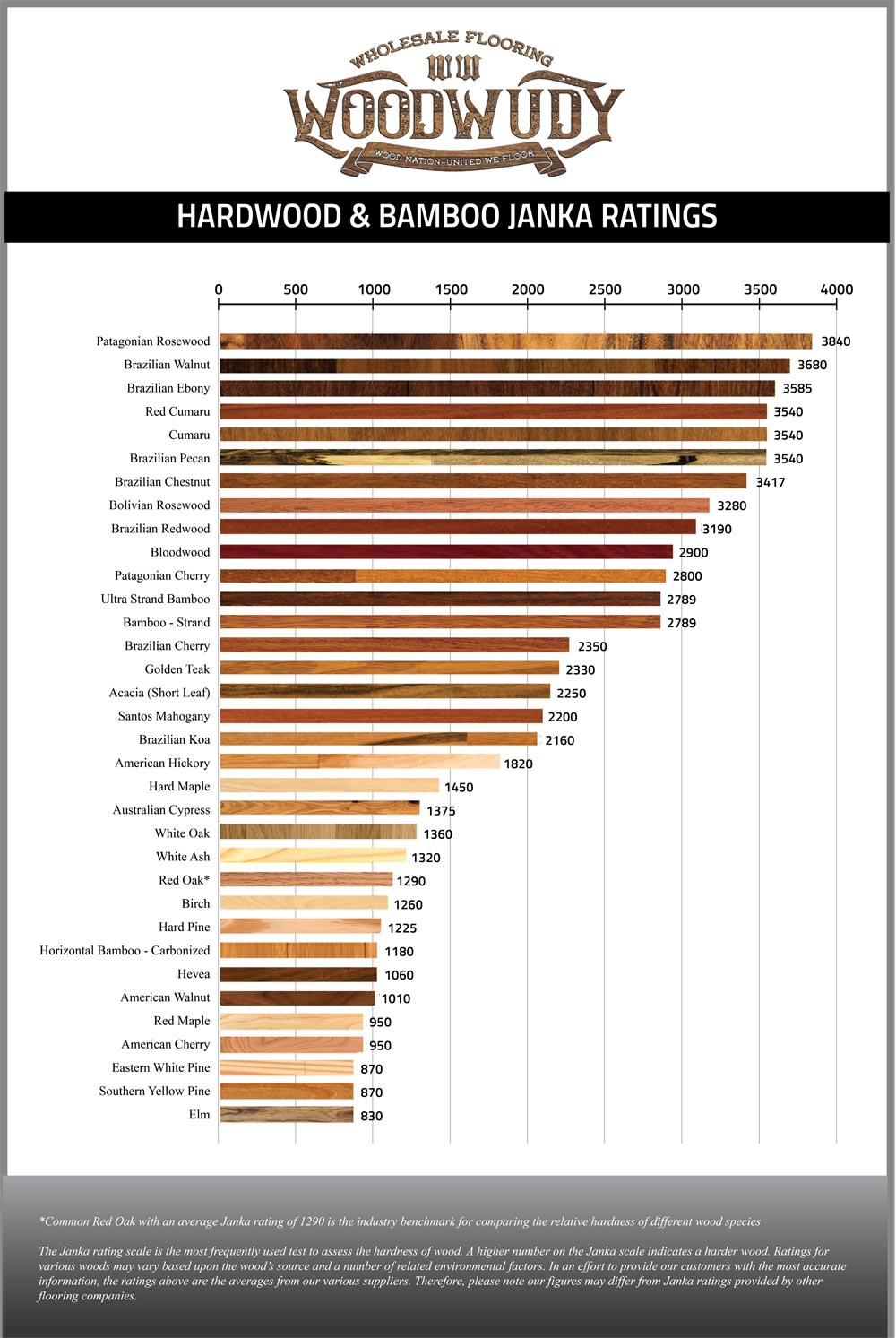Wood Hardness Scale
This scale includes all of the different species of hardwood and rates them according to their hardness and durability against wear and indentations caused by heels of shoes or dropping items on the floor. It will also indicate the ease of nailing, drilling or sawing a particular species of wood during the installation process, with the harder woods being harder to work with and the softer woods being easier to work with. The harder woods like Red Oak will be a higher number on the scale and the softer woods will be a lower number on the scale. A hardwood with a high Janka Hardness rating may be preferable for areas where there is high traffic or if you have small children or indoor pets.
The Janka Hardness Test was conducted by measuring the amount of force necessary to embed a .444 inch steel ball into side of the wood up to one half of its diameter to determine its hardness rating, which is then recorded on the Janka Hardness Scale. There may be variations of more or less than 20% on the scale, since this is a scientific test. Please also take into consideration that manufacturing processes and surface finishes will affect the durability of a particular species. For example, if a species with a lower Janka Hardness rating has a protective finish of up to ten coats of aluminum oxide, it can still be very durable. Although the hardness of the wood clearly indicates its durability, the number of coats and quality of the finish and whether or not it has been UV cured is also an indication of its durability. Please use the Janka Hardness Scale below as a guide to determine the measurements of the hardness and durability of the most popular species used for hardwood flooring.
At Woodwudy Wholesale Flooring, we are here for you! If you need any assistance or additional information, please call our trained flooring specialists at 1-877-966-3983.
Wood Hardness Chart


































